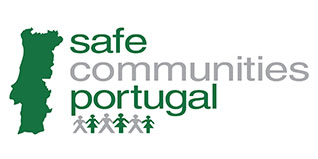Complaints by health professionals who are victims of violence in the workplace are rising. According to the report of the Directorate-General for Health, in 2015 there were 582 notifications, 9.6% more than in the previous year. In 51 cases there was a complaint made to the police. The main targets of aggression were mainly nurses and doctors: most of the situations are discrimination / threat, insults and moral pressure. The perpetrators are mainly ill, but there are also situations in which other health professionals are involved.
According to areport in the Diaro de Noticias (DN) the number of online notifications that have reached the Directorate General of Health (DGS) has increased since 2007, but the great jump was from 2013 to 2014, when the number of complaints more than doubled. The trend, shows the new report Violence Against Health Professionals, was kept in 2015 . “However, it is impossible to distinguish whether there are more notifications of this type of incident because the professionals are more alert to the notification or if there are more cases of Violence, “the DGS points out in the document.
From the analysis it is possible to conclude that most of the violence happens in the public services, more in the hospitals, soon followed of the health centres. In 551 reports, there was identification of where the aggression occurred. First are external consultations, followed by emergencies, adult medicine services, psychiatric internment, care services, and administrative services.
According to the 2015 data, the perpetrators are mostly patients (307), family members of patients (129), health care workers at the health unit (109) and patients’ caregivers (19). As for the sex of the aggressor, there are no great differences between men and women. And except for all the others serve them where the sick are the main offenders, but hospital consultations “predominate health care unit health workers as aggressors,” the report says.
As for the victims of aggression, the vast majority (309) are nurses, followed by doctors (145). And how did they manage the situation? They asked for treatment, were temporarily absent from the service, received support, reported an accident at work and gave rise to an investigation. It should be noted that “423 reports indicate that violence is common in the health unit” and “346 report that the episode of violence could have been prevented.” The same notification may refer to both cases, which is why the sum is higher than the total number of notifications.
The DN reports that Guadalupe Simões of the Portuguese Nurses’ Union (SEP) believes that the number of notifications registered in the DGS does not reflect what is happening in reality and it is not surprising that nurses are the main targets of violence. “Waiting times are long, there is a shortage of material as we have denounced, nurses are few in services, they are the first to receive people. In 2015 it is good not to forget that people’s economic conditions were different, the perspective of the future Was smaller, cuts in health were substantial. People were already tense and there were also, “he says.
The union also receives complaints of aggressions such as that of a nurse who was assaulted in a health center by a user who wanted to receive methadone. “There is a mix of revolt and some blame on the victim,” says Guadalupe Simões, who also speaks of violence among professionals. “For us to withdraw rights to force a child to not have flexible hours because of younger children is an assault. In some family health facilities there is pressure for nurses to do 40 hours when the time is 35. It generates tension among colleagues and that too Reflected in care. “
